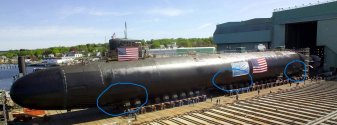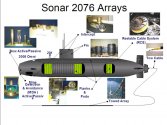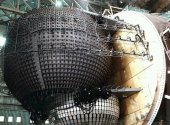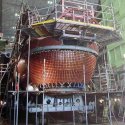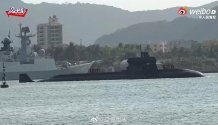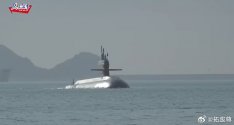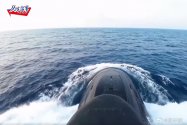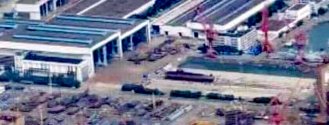I don't have the time now to dig into old notes so I may misremember the details but the general notion is correct. I will spare you the equations because I don't think they would be very helpful and I don't want to mess them up accidentally.
----
In
sonar theory there is a mathematical formula that defines how the
size of array measured by
distance between individual hydrophones in the array determines the sonar's
center frequency i.e. median value in sensitivity spectrum of the sonar.
Lower center frequency is better because low frequency waves have better propagation so the lower the median value the lower the sensitivity of the entire array. The relationship is that
greater distance between hydrophones allows for lower center frequency. So by increasing the distance between hydrophones the array is "tuned" to lower frequencies overall.
This is why towed array sonars have been invented because they allow the hydrophones to be distributed across hundreds of meters and allow for detection of frequencies measured in single digit Hertz. You can hear regular tectonic movements with a modern towed array. However as you can imagine kilometers-long towed arrays are very problematic in the littorals or when the sub is expected to maneuver over small area.
Flank sonar array is a simpler and more convenient substitute to towed sonar array. It reduces the sensitivity overall and to very low frequencies but in littorals there is not much use for extreme detection ranges anyway and because distance between hydrophones is what matters a flank array stretching along the entire hull gives better sensitivity than even the best bow array. It is also used in newer SSNs which have towed arrays because it provides better detection when TA is not deployed.
Astute-class
View attachment 126353
The narrow flank array is just a simple towed array fixed to the hull. The wide flank array is bow (main) array stretched across the hull.
Wide array improves the performance somewhat, although not as well as a longer narrow array would. But it also adds better precision, especially in three dimensions because direction is measured by time of arrival of signal at individual hydrophones, to determine the angle. If you can measure the angle well enough horizontally and vertically it allows for better precision than just by angle in horizontal plane and other parameters of the wave.
This is also why spherical bow arrays i.e. main sonars have been replaced by conformal arrays - they increase distance between hydrophones. They also increase the overall array area which allows for more hydrophones to be put in the array at the necessary distance to preserve low center frequency.
cylindrical array (Kilo)
View attachment 126350
spherical array
View attachment 126351
conformal array (Lada)
View attachment 126352
Number of hydrophones determines
array gain.
More hydrophones means better gain and better gain is necessary to hear waves not only at greater distances but also against
background noise.
The wider flank arrays can be combined with a spherical bow array to form a quasi-conformal array or perhaps it's all conformal arrays both flank and bow.
Sonar array is a mathematical construct. When a sub deploys a TA the computers form a virtual array together with the bow array and the flank array.
